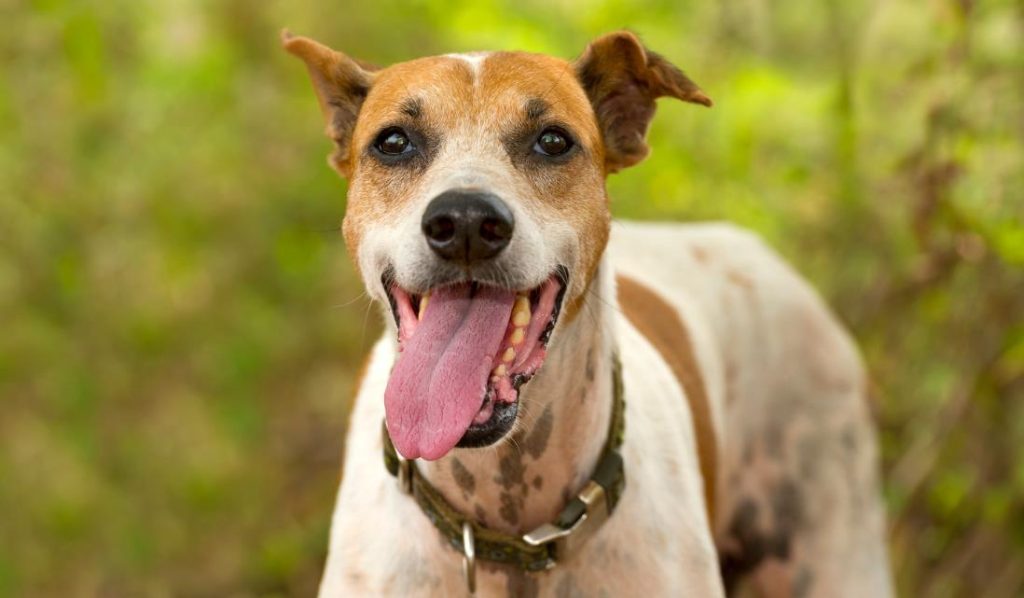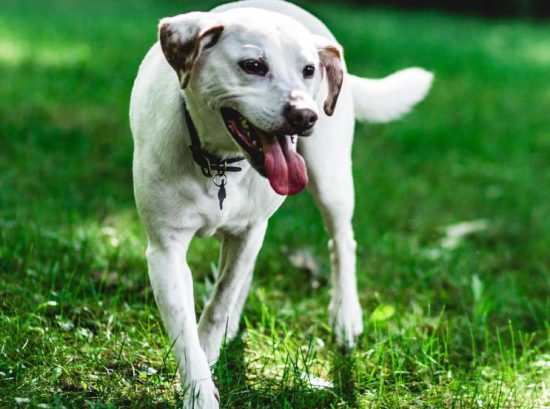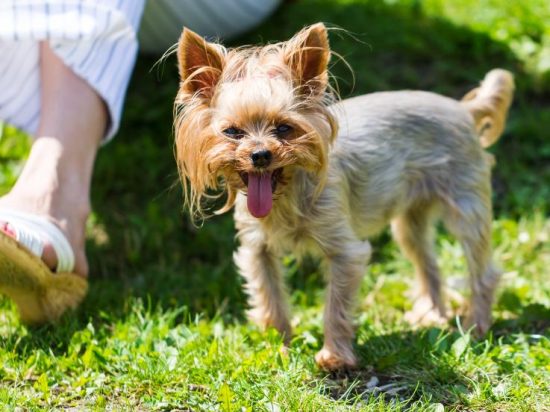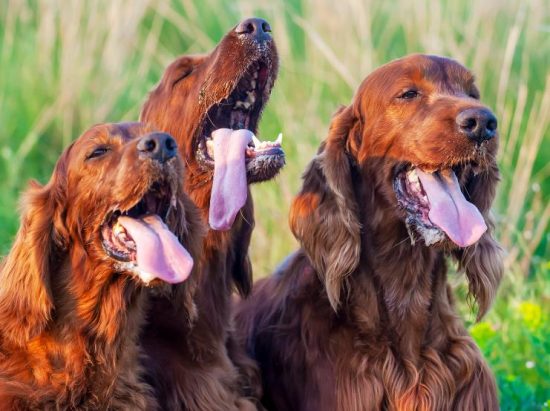Why is My Dog Panting So Much? Causes & Remedies
Why is my dog panting so much? Discover the possible causes, from heat to illness, and learn how to provide relief and when to seek veterinary care.

Did you know that over 50% of dog owners report their canine companions pant excessively, often without an apparent cause? Excessive panting in dogs can be a concerning symptom, potentially indicating serious health issues or distress. Understanding the common causes and when to seek veterinary care is crucial for keeping your furry friend healthy and comfortable.
It’s normal for dogs to pant, especially when they’re hot, excited, or energetic. Heavy panting, however, may be a sign your dog is dangerously overheated, coping with a chronic health problem, or has experienced a life-threatening trauma. Panting helps dogs cool off when they’re hot or engaged in vigorous exercise. Dogs take between ten and thirty breaths a minute, depending on their size. Get to know what your dog’s everyday breathing and panting looks like so you’ll more quickly notice suspicious changes.
Excessive panting may indicate issues like heatstroke, poisoning, chronic illnesses, injury and pain, or medication side effects. It’s important to recognize when panting becomes abnormal and requires veterinary attention, whether you’re concerned about why is my dog panting when doing nothing? or how much panting is too much for a dog?
Understanding Dog Panting

To help you recognize abnormal breathing or excessive panting in your dog, you need to know your dog’s healthy breathing pattern. On average, a healthy dog will take between 15 to 35 breaths per minute when they are resting. Panting helps your four-legged friend get their body temperature back to normal. Dogs aren’t able to sweat to cool themselves off, instead, they have to breathe faster in order to let air circulate in their bodies.
Normal vs. Abnormal Panting
Panting works by convection, where heat from the dog’s body is absorbed by the water on their tongue. As the dog pants, the air leaving the body evaporates the water, releasing the heat as a gas, allowing the dog to breathe in cooler air. This normal panting pattern is essential for regulating a dog’s body temperature, especially during physical activity or in warm environments.
Why is my dog panting?
Dogs use panting as a way to cool down their bodies. When a dog is overheated or has been engaging in strenuous exercise, their panting rate will increase to help dissipate excess body heat. This rapid, open-mouthed breathing is a normal and healthy response to help a dog maintain their normal dog panting and healthy dog breathing patterns.
Common Causes of Excessive Panting in Dogs

Excessive panting in dogs can be caused by a variety of factors, including heatstroke or poisoning, chronic illnesses, injury and pain, and medication side effects. Understanding these common causes is crucial for pet owners to recognize when their dog’s panting becomes a cause for concern.
Heatstroke or Poisoning
Heatstroke is a life-threatening condition that can affect dogs more easily than you might think. On a hot summer’s day, it might be tempting to take your dog outside, but this can put them at risk of heatstroke. Dogs cannot sweat like humans to cool themselves, so they rely on panting to regulate their body temperature. When dogs are exposed to extreme heat, their panting becomes excessive and labored, indicating a medical emergency.
Chronic Illnesses
Certain chronic health conditions can also cause dogs to pant excessively. Heart failure, Cushing’s syndrome, and respiratory disorders are examples of underlying illnesses that can lead to heavy breathing or panting in dogs. These chronic issues can make it difficult for dogs to effectively regulate their temperature through panting.
Injury and Pain
Excessive panting in dogs can often be a sign of injury or pain. When a dog is in pain, whether due to an acute injury like a cut or broken bone, or a chronic condition such as arthritis, it may pant more heavily as a stress response. This panting is the dog’s way of coping with discomfort and can be accompanied by other signs such as restlessness, whining, limping, or changes in behavior. It’s essential to observe your dog for any additional symptoms and seek veterinary care to diagnose and address the underlying cause of pain.
Medication Side Effects
Certain medications can cause excessive panting as a side effect in dogs. Drugs such as steroids (prednisone), pain relievers, and some anti-anxiety medications can affect a dog’s respiratory system or thermoregulation, leading to increased panting. If you notice your dog panting excessively after starting a new medication, it’s important to consult with your veterinarian. They may adjust the dosage, suggest an alternative medication, or provide guidance on managing the side effects to ensure your dog’s comfort and well-being.
Respiratory Issues Leading to Panting
Numerous respiratory disorders can contribute to heavy breathing or excessive panting in dogs. Conditions such as laryngeal paralysis, pneumonia, and lung tumors may all lead to labored respiration and distressed panting patterns as dogs struggle to regulate their body temperature.
Asthma and Kennel Cough
Respiratory illnesses like asthma and kennel cough can also cause breathing difficulties and excessive panting in dogs. These conditions can make it challenging for dogs to effectively cool themselves through panting, resulting in labored, elevated breathing.
Laryngeal Paralysis and Lung Diseases
Laryngeal paralysis, a condition where the larynx malfunctions, can obstruct airflow and lead to heavy, noisy panting. Similarly, lung diseases such as pneumonia or lung tumors can impair a dog’s ability to regulate their temperature through panting, causing distressed breathing patterns. These respiratory problems may make it difficult for dogs to cool themselves effectively, leading to excessive panting.
Cardiovascular Conditions Causing Panting
Similar to humans, dogs can also experience heart failure. And just as with people, dogs may exhibit some of the same symptoms, including difficulty breathing, reduced exercise tolerance, and coughing. Cushing’s syndrome, a condition where a dog’s adrenal glands produce an excess of cortisol, can also lead to heavy panting along with other symptoms such as excessive hunger, thirst and urination, hair loss, and a pot-bellied appearance.
Heart Failure
When a dog’s heart is unable to effectively pump blood throughout the body, it can result in heart failure. This cardiovascular condition can cause dogs to experience breathing difficulties, including excessive panting, as the heart struggles to circulate oxygenated blood. Reduced exercise tolerance and persistent coughing are also common signs of dog panting from heart problems.
Cushing’s Syndrome
Cushing’s syndrome, a hormonal disorder, can also contribute to heavy, labored panting in dogs. In this condition, the dog’s adrenal glands overproduce the hormone cortisol, leading to symptoms like excessive thirst, hunger, and urination, as well as hair loss and a pot-bellied appearance. Excessive panting is another hallmark sign of Cushing’s syndrome in canines.
Why is my dog panting so much?
Brachycephalic dog breeds, such as Boston terriers, boxers, and pugs, face a higher risk of developing breathing issues and should always be closely monitored by pet owners for signs of increased respiratory effort. These reasons for excessive dog panting are due to their shortened snouts, which can make it difficult for them to regulate their body temperature effectively through panting.
However, no matter which breed your dog is, heavy panting or fast breathing could be a sign that your pooch is suffering from an illness or injury that requires urgent veterinary care. Conditions like heatstroke, respiratory disorders, cardiovascular problems, or underlying pain can all lead to excessive reasons for excessive dog panting.
If you notice your dog panting heavily or exhibiting labored breathing, it’s important to act quickly and consult with your veterinarian. Prompt medical attention can make all the difference in identifying and addressing the underlying cause, ensuring your furry friend’s health and well-being.
Signs of Excessive Panting

If you see your dog excessively panting when they are resting, or breathing heavily when they are sleeping, they may be experiencing respiratory distress. The symptoms of excessive dog panting that warrant attention include heavy, fast breathing that’s louder or different sounding than normal panting, open-mouthed breathing while at rest, reluctance to drink, eat or move, pale, blue-tinged, or brick red gums, out of character drooling, and noticeably labored breathing engaging the stomach muscles.
Breathing Changes
Pay close attention to any changes in your dog’s breathing patterns. Abnormal respiratory signs to watch for include irregular or rapid panting, open-mouthed breathing even at rest, and labored breathing that engages the abdominal muscles. These changes may indicate an underlying health issue that requires prompt veterinary care.
Behavioral Changes
Excessive dog panting can also be accompanied by behavioral changes, such as restlessness, anxiety, or discomfort. If your normally calm dog becomes agitated or reluctant to move, this could be a sign that they are experiencing respiratory distress or pain.
Physical Symptoms
In addition to observed breathing and behavioral changes, physical symptoms like pale, blue-tinged, or brick-red gums, excessive drooling, and general lethargy can all indicate that it’s time to take your dog to the vet. When to worry about dog panting is when these concerning physical signs arise.
When to See a Veterinarian?

If your dog’s panting starts suddenly, you think your dog may be in pain, the panting is constant and intense, or your dog’s tongue or gums appear blue, purple, or white, you should call your vet immediately. Any unexplained change in your dog’s breathing, whether heavy panting, coughing, or wheezing, always warrants a call to the vet. Acting quickly is crucial, especially if you suspect heatstroke, as it can be a life-threatening emergency.
When it comes to your dog’s panting, it’s better to err on the side of caution and seek veterinary attention if you notice any concerning changes. Don’t wait to see if the excessive when to take dog to vet for panting resolves on its own. Prompt medical care can be the difference between a full recovery and a serious or even fatal outcome, particularly in cases of heatstroke or other acute respiratory distress.
Your vet will be able to quickly assess your dog’s condition, determine the underlying cause of the abnormal panting, and provide the appropriate treatment. With their expertise, they can ensure your furry friend gets the care they need to get back to their happy, healthy self as soon as possible.
Diagnosing the Cause of Panting
To determine the underlying cause of your dog’s excessive panting, your veterinarian will conduct a comprehensive physical examination. By thoroughly assessing your canine companion, the vet can identify potential problems in the heart, circulatory system, lungs, airway, neck, or other areas that may be contributing to the heavy breathing.
Physical Examination
During the physical exam, the vet will closely observe your dog’s breathing patterns, listening for any abnormal sounds or signs of respiratory distress. They will also check your dog’s gum color, heart rate, and other vital signs to detect any potential health issues. The vet may palpate your dog’s neck and abdomen to detect any swelling or discomfort that could be causing the how vets diagnose cause of dog panting.
Diagnostic Tests
Depending on the findings from the physical exam, the vet may recommend additional diagnostic tests to further investigate the how vets diagnose cause of dog panting. This could include X-rays to evaluate the heart, lungs, and abdomen for any underlying conditions. The vet may also suggest bloodwork or other lab tests to check for hormonal imbalances, infections, or other medical problems that could be contributing to the excessive panting.
By combining a thorough physical examination with targeted diagnostic testing, your veterinarian can pinpoint the root cause of your dog’s heavy breathing and develop an appropriate treatment plan to address the issue and restore your pet’s respiratory health.
Treatment Options for Excessive Panting
The treatments used for your dog’s excessive panting will be determined by the underlying cause of the issue. Your vet might prescribe pain relief, intravenous fluids, or other medications to help restore your dog to good health. If your pup’s heavy breathing is the result of anxiety or stress, your vet may recommend special training with a certified dog behaviorist.
Medication and Therapies
Rest and oxygen therapy will likely be needed to start your dog along the road to healing. In severe cases, hospitalization may be required to monitor the dog’s breathing and treat the underlying condition. Medications and therapies aimed at addressing the root cause of the panting, such as anti-inflammatory drugs for joint pain or diuretics for heart failure, can provide relief and help your dog breathe more easily.
Behavior Modification
Behavior modification techniques can be highly effective for dogs whose excessive panting is triggered by anxiety or stress. Your vet may suggest working with a certified dog behaviorist to teach your pup coping mechanisms and reduce the episodes of heavy, rapid breathing. Techniques like counterconditioning, desensitization, and using calming supplements or pheromones can help soothe your dog’s worries and prevent stressful panting.
FAQs on why is my dog panting so much
When to worry about dog panting?
It’s important to be aware of when your dog’s panting becomes excessive or abnormal, as it can be a sign of serious health issues like heatstroke, respiratory problems, cardiovascular conditions, or underlying pain or anxiety. Seek veterinary guidance at the first signs of trouble, as prompt medical care can make a big difference.
Why is my dog panting when doing nothing?
Excessive panting when a dog is at rest can indicate respiratory distress, chronic illnesses like heart failure or Cushing’s syndrome, or other underlying medical problems. Any unexplained change in your dog’s breathing patterns warrants a call to the vet.
How do you calm down a panting dog?
If your dog’s panting is due to anxiety or stress, your vet may recommend special training with a certified dog behaviorist. Providing a calm, quiet environment and using techniques like pressure wraps can also help soothe an anxious, panting pup.
How much panting is too much for a dog?
On average, a healthy dog will take 15 to 35 breaths per minute when resting. Excessive or constant panting, especially when the dog is not hot or exercising, can be a sign of an underlying health issue and should be evaluated by a vet.
Is panting painful for a dog?
Panting itself is not painful for dogs, but the underlying causes of excessive panting, such as injury, pain, or illness, can be distressing and uncomfortable for the animal. If your dog is panting excessively, it’s important to determine the root cause and provide appropriate treatment.
Why does my 14-year-old dog pant so much?
Excessive panting in older dogs can be a sign of age-related health problems like heart disease, respiratory issues, or other chronic conditions. It’s important to have your senior dog examined by a vet to identify the cause of the increased panting and receive appropriate treatment.





